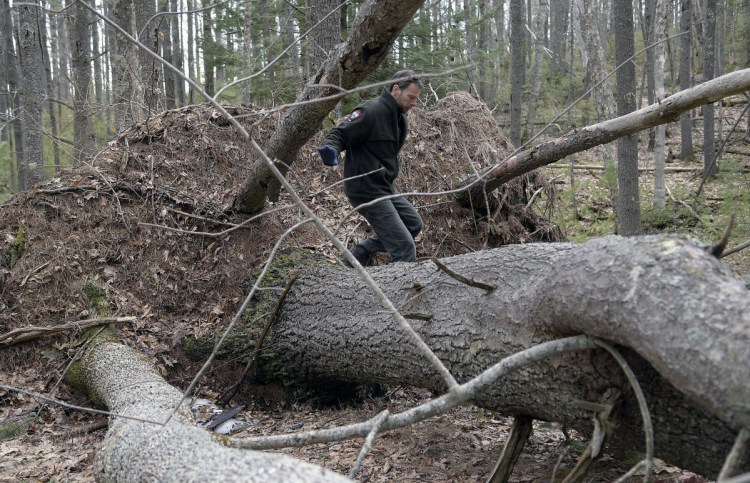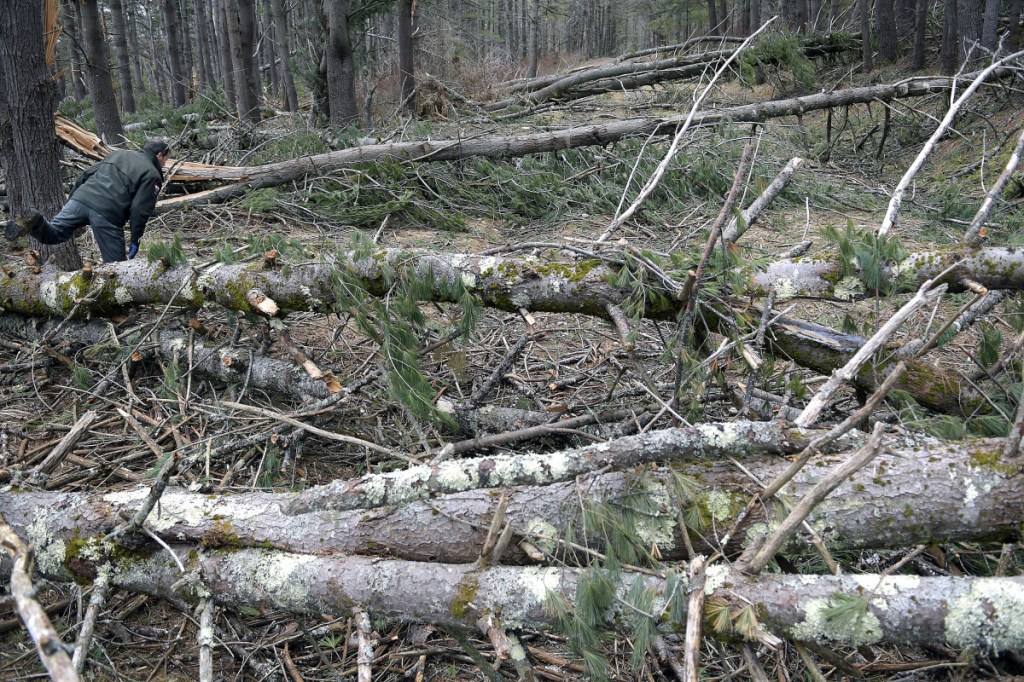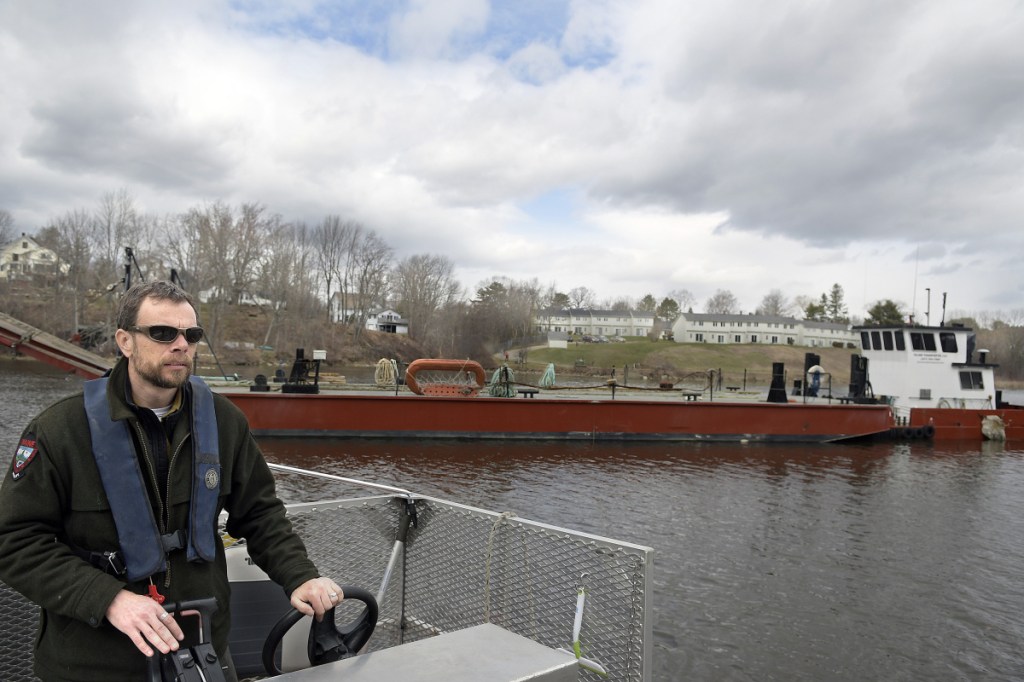RICHMOND — A massive timber harvesting operation now underway on Swan Island is expected to remove hundreds of fallen trees from the wildlife management area at the head of Merrymeeting Bay in the Kennebec River.
It may be the largest timber-clearing operation on the island since it was acquired by the state more than seven decades ago.
The widespread blow-down is the result of the powerful windstorm that swept through Maine at the end of October, knocking out power to more than 500,000 people statewide and countless trees.
The salvage operation in Richmond, starting this week and running through May, is expected to delay the annual opening day on the island until June 1, although educational programs scheduled for May and June still are expected to take place.
John Pratte, wildlife biologist for the state Department of Inland Fisheries & Wildlife and Swan Island manager, said he had been expecting to spend the winter planning a cutting operation on the island to diversify habitat for woodcock, grouse and songbirds.
Instead, Pratte planned the salvage operation that expected to remove an estimated 1 million board feet of wood from the island, which is part of the Steve Powell Wildlife Management Area, over the next five weeks.
“This is more than we were planning on harvesting initially,” Pratte said, but when the project is done, the result is not expected to be drastically different from the expected timber harvest project.
Had Pratte and the department developed detailed cutting plans over the winter, they would have met with logging contractors about what would be needed to make the project feasible to do.
“One of the most expensive parts of doing timber management on the island is the barging costs. You have to harvest a certain volume to make it a viable operation,” he said.
Swan Island is accessible only by boat. Inland Fisheries & Wildlife operates a ferry service in the warm months from Richmond.
The state has contracted with Arey Marine & Wood Products Inc., of Warren, to take the wood off the island. The company has been using a barge to transport equipment to the island from the Inland Fisheries & Wildlife dock, and perhaps as many as four crews will be deployed for the salvage work.
The wind took down trees from the island’s two high points and along the west edge of the fields that stretch down the eastern side of the of the 4-mile-long island.
“The island has very shallow soils, and with that storm, there was a lot of rain,” Pratte said. “The ground was very soft, and when you combine that with shallow soils and the wind, it just came down.”
Most of the trees that have fallen are intact, and parts of the road are lined with root masses.
Since the island was acquired by the state more than 70 years ago, little harvesting has been done other than making use of cut trees for projects on the island, and salvaging a small patch of blown-down trees about 15 years ago.
Inland Fisheries & Wildlife has produced a brochure for the island that recaps the island’s history. It has been the site of human habitation for centuries — first by the Kennebec tribe and later by the European settlers and their descendants, who cleared the forest for farms. Eventually, the town of Perkins was incorporated and then unincorporated as the population on the island dwindled and ferry service across the Kennebec was halted.
Jay Robbins, of Robbins Historical Research, said at one point, Bath Box Co. owned nearly a quarter of the island and used the timber it cut to make wooden shipping crates.
During Steve Powell’s time managing the island in the 1940s and 1950s, Robbins said, trees also were cut, including an enormous white pine found to be 212 years old.
Pratte said some standing trees also are expected to be cut to create regeneration areas. And a couple of areas have been identified to be thinned as research, to see whether that makes those areas more or less susceptible to wind throw.
The hope is that enough regeneration will take place that the island’s deer population can’t graze it all, he said.
“We’ll have more than 100 acres in regeneration,” he said.
The duration of the job is expected to be short; for this operation, timing is everything, and it has to be completed before summer sets in.
“Most of the timber that’s down is white pine,” Pratte said. “Once you cut it, it has an expiration date. Around June, when the temperature and humidity is just right, it will blue stain because of a fungus.”
Once that stain happens, the wood has no value.
The logging company, which signed a stumpage agreement, has agreed to pay the state for the wood, which it will take to be milled.
The revenue to the state goes into a fund that supports management activities to all the state’s wildlife management areas.
Even as the unanticipated salvage operation starts in earnest, regularly scheduled management projects are expected to continue.
Pratte said a prescribed burn is scheduled to take place Monday. It’s part of a long-term plan to improve nesting habitat on the island.
Jessica Lowell — 621-5632
Twitter: @JLowellKJ
Send questions/comments to the editors.






Comments are no longer available on this story